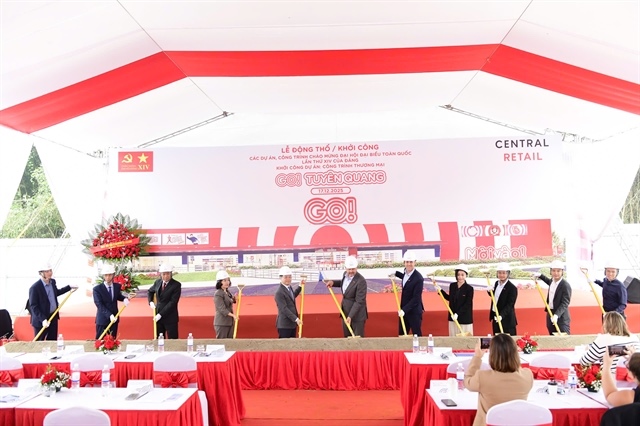Tough inspections for Hydro-electric projects
Tough inspections for Hydro-electric projects
Deputy Prime Minister Hoang Trung Hai yesterday asked for dams involved in hydro-electricity projects across the country to undergo thorough safety inspections.

This has resulted after a 40-metre breach of the Ia Krel 2 dam in the Central Highlands province of Gia Lai was discovered two weeks ago.
The Ministry of Construction is responsible for reviewing the legal regulations on quality management at all hydro-electricity projects.
This is to settle all the current loopholes that could possibly lead to violations as well as improve the effectiveness of the local authorities' state management.
The ministry has also been tasked with adding more regulation to the design, construction and competence and experience of consultants in these projects.
The ministry, in co-operation with the ministries of Industry and Trade and Agriculture and Rural Development, conducts quick inspections and assessments on the safety of reservoirs and dams at hydro-electricity projects. The results are fed back to the Prime Minister.
The Ministry of Agriculture and Rural Development takes responsibility for drawing up plans with localities to improve the quality of dams and reservoirs and manage the safety of these projects.
The Ministry of Industry and Trade needs to ask hydro-electricity plants to stop storing water and generating electricity if they detect a risk, to protect the people living in low-lying areas.
These projects are only allowed to operate when they adhere to all the safety conditions contained in the legal regulations.
The provincial and city-level people's committees need to boost supervisions and appraisal of the management of hydro-electricity projects.
If any errors are detected, the investors will have to cease operating.
Also yesterday, Central Highland Gia Lai Province released the result of an inspection into the cause of the dam breach at the 5 Megawatt Ia Krel 2 project.
The failure of the construction company to stick to the approved design and the investor irresponsibly when managing the projects quality are prime causes for the breach.
According to the design, the inside of the dam should have been covered by a layer of cement 20cm-thick and 250m-long. However, the construction company failed to abide by this design as most of the dam was built with soil.
Moreover, the construction company also allowed vehicles to travel on top of the network of pipes, which was unfinished and damage subsequently appeared.
Last month, the project's investor - the Bao Long-Gia Lai Hydro-Electricity-Industry Company - stored five million cubic metres of water, equal to half of the highest capacity before being authorised by the relevant agencies.
The province's inspection team told the investor to rebuild the dam from scratch if they wanted to continue with the project.
The investor will also be fined and have to compensate local people for their losses which are estimated to reach VND10 billion.
When the dam burst two weeks ago, ten residents were swept away by the torrent, but were later found safe and well while many houses and trees were destroyed.
Construction on the plant started in 2010 and it is expected to come into operation in the third quarter of this year.
vietnamnews























